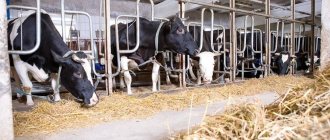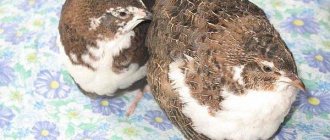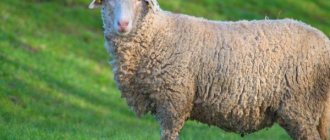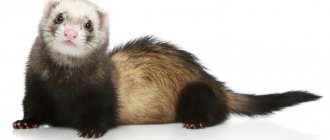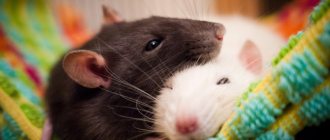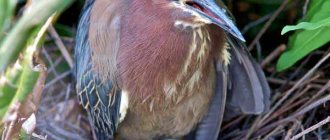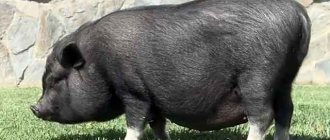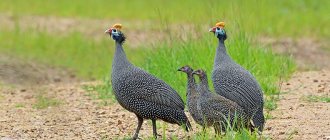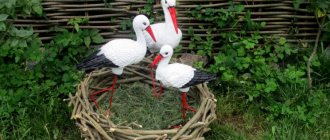Every day, more and more often, people choose not the usual pets (such as a dog, cat or hamster), but unusual and rarer animals. For example, they get a ferret as a pet. But are wild creatures capable of living harmoniously with people?
Many owners of these animals believe that this is possible. Some have never regretted such an unconventional choice of a pet. Is it worth having a predatory baby in the house who comes from a wild forest? Let’s determine all the advantages and disadvantages of the decision made.
Historical reference
The first mention of the ferret is found in the works of the Greek satirist Aristophanes. He lived from 448 to 385. BC e. and in his plays he described a certain marten-like animal that was a pet. Another Greek historian, Strabo, described the fret's hunt for rabbits that flooded the Balearic Islands. There is also evidence according to which Genghis Khan himself in the 13th century, while in Afghanistan, used ferrets for hunting.
These miniature charmers began to appear en masse in Russian families relatively recently. Just 15 years ago, even in Moscow they were absolutely exotic, not to mention the provinces. At the same time, domestic ferrets became widespread in the West about 40 years ago, where they constitute significant competition for hamsters, guinea pigs, ornamental rats and other small animals traditionally kept as pets. Ferrets have become especially popular in North America, as well as in Japan.
Character
Domestic ferrets are sometimes called furo, which means “thief” in Latin. And this fully reflects their character. Ferrets are smart, quick-witted, and prone to theft. They love to steal and hide various items that might interest them. If you are thinking of purchasing a ferret as a pet, then you should consider their passion for kleptomania.
Fretka can steal your things and store them in the most unexpected places, so especially valuable ones should not be left unattended. Ferrets are beggars and skilled actors. They will do anything to achieve their goal.
It is also worth considering that ferrets are nocturnal animals. They sleep during the day, but at night they will be active, preventing you from sleeping. This problem worries many owners of these interesting animals.
In the wild, ferrets live in burrows, so digging is one of these animals' favorite pastimes. Unfortunately, pets also have such habits, so you should hide flower pots from them.
Ferret as a pet
The domestic ferret or, as it is also called, ferret or furo (from the Latin Mustela putorius furo - thief or cunning) is a small, squat animal of the mustelidae family. The body of a domesticated ferret is flexible and elongated, with a long tail, thick fluffy fur and charming beady eyes. Smart and cunning, but incredibly friendly animals as pets have gained popularity all over the world.
| How long does a domestic ferret live? | From 8 to 12 years. The maximum lifespan of a pet is up to 15 years. Life expectancy largely depends on genetic predisposition, nutrition, maintenance and care of the animal. |
| Does a ferret smell bad? | People mistakenly consider the ferret to be almost smellier than a skunk. Indeed, the anal glands of an animal in a stressful situation are capable of releasing an unpleasant, pungent odor. But the ferret uses them only in exceptional cases: when all other methods of protection have been tried. In any case, the smell is easy to remove, unlike cat marks, for example. Prianal glands can be removed surgically, but this can negatively affect the pet's health. Ferret excrement and urine have almost no odor. |
| Does the ferret bite? | The sharp teeth and claws of the animal are quite dangerous for humans. Moreover, furo is very vindictive, and he has a fairly strongly developed “wild” perception of the world around him. The pet is especially aggressive at night. It's not difficult to stop your pet from biting. He is just as susceptible to education and training as dogs. |
| What is the price of the animal? | You can purchase pet-class furo at a cost from 1 thousand (from hands) to 5 thousand rubles. When buying an animal from someone else, remember that it may be sick and soon die. Ferrets from nurseries are more expensive: breed class from 8 to 12 thousand rubles, show class – from 12 to 18 thousand and more. |
| What to feed your ferret at home? | The ferret is a carnivorous animal. In the wild, it feeds on insects and small animals: frogs, mice, birds. Therefore, at home, your pet needs mixtures of meat products or special ready-made food, which can be purchased at pet stores. Some ferrets love natural food: vegetables, meat, fish, eggs, cereals. Sweet, salty, fried and other foods from the human table are very harmful to the animal. |
| Who is this pet suitable and not suitable for? | Keeping a ferret is akin to caring for a dog. The animal is suitable only for a responsible and experienced animal lover, active and energetic, ready to sacrifice sleep or comfort for the sake of the pet. And also to those who have the time and financial resources. |
| A bad choice for older people, families with small children (under 7 years old), or people who are constantly on business trips. You should also not keep a ferret in a house where there are burrowing hunting dog breeds (for example, dachshund). Another “bad neighbors” are birds, reptiles or rodents. Sooner or later, the cunning ferret will find an opportunity to get to your pets and feast on them. | |
| How does the ferret treat children? | You should not leave the ferret alone with small children. Even a friendly animal can painfully bite a child during play. |
The ferret is not a member of the rodent family, like hamsters or mice. Moreover, the latter are the food of the ferret. In their behavior and physiology, representatives of this species are much closer to dogs and cats.
External data
Distinctive features of the fret:
Upbringing
As a pet, a ferret must know and understand some rules of behavior. And the owner needs to be patient in raising the pet so that it does not cause unpleasant troubles.
First of all, he must get used to the owner and this takes time. Therefore, you should not purchase adult animals - they have already had experience of communication, and it is unknown how they will behave with you.
Start hand-feeding your new pet while talking to him and telling him his name. The animal will quickly get used to you and your voice.
How to toilet train
The ferret at home goes to the toilet in a litter tray, which must first be placed in the cage, and then can be moved into the room.
- if you adopted an animal from a breeder, it is already toilet trained and will quickly get used to a similar tray and filler;
- if this is not the case, then you will need to carefully monitor the new pet and put it in the tray at the right time;
- If an animal shits in the wrong place, it can be punished by putting it in a cage. Treat this area with a special anti-odor agent.
How to play with a ferret
Ferrets are very playful animals from early childhood until old age:
- when playing with its owner, the animal can bite him quite hard. Therefore, it is better to protect your hands with leather gloves;
- You can play with him the same way as with a cat: by wrapping your arms around him, as if you are fighting him, or by tying the toy to a thin rope and moving it;
- if you buy or build a tunnel for an animal, it will happily run away from you through it while playing;
- hide something tasty in a maze or somewhere in the house, and the ferret will look for it. This is a great game that trains the animal;
- A bright plastic toy and a tennis ball will suit your pet well. He won't be able to bite through them. And the games will be fun.
Play is part of raising a pet. You need to devote a lot of time to this. This is very important to him.
How to stop biting
You must immediately show your displeasure if your pet ferret bites you, even if he did it while playing:
- scream and move away from your pet;
- clap your hands loudly and say “no”;
- move away from him and stop playing.
The ferret must understand that he was punished. You can put him in a cage. The main thing is to do these actions every time he bites you. Only in this way will the ferret understand what exactly he is doing wrong. But when he stops biting, you need to thank him with a tasty morsel.
How to train at home
A ferret can be trained at home, but it will take some time. Firstly, this should not be done during play, otherwise the animal will not understand that this is training. Secondly, you can use different methods: rewarding with treats, imitating other animals. Thirdly, you cannot ask several commands at once - let him learn one first, then the other. Commands should be short, and alternate difficult commands with easy ones.
Choosing an animal and preparing for its appearance in the apartment
When choosing between a male and a female, one must take into account that male ferrets are larger, more attached to the owner, but at the same time more aggressive during puberty.
Female ferrets are smaller and easier to train, but they are also much more curious and independent. You can ask breeders in advance to send photos of ferrets in order to choose the baby you like. When the owner goes home with his new little pet, everything should already be ready.
To avoid any surprises, before entering the apartment, some manipulations are performed:
- They check if there are any cracks or holes where the animal can climb; if there are any, they are plugged with something or nailed down.
- Remove all pots with indoor plants as high as possible.
- Move away from the windows all objects on which the animal could climb onto the windowsill - this is done so that the pet does not break if it accidentally falls out of the window (anti-mosquito nets do not help, it is better to install a metal one).
- Close the holes under the balcony railing and place a net on the doorway leading to the balcony.
- All wires are insulated or lubricated with a special safe but bitter paste against rodents.
You also need to prepare a sleeping place, tray, feeding bowl and drinking bowl in advance. It is better to put a mesh in a tray with a high side, since the filler will be immediately excavated.
The drinking bowl and feeding bowl should be heavy enough so that your pet cannot carry them. The sleeping place can simply be a small mattress or (which is preferable) in the form of a hammock.
Keeping a ferret in an apartment where there are other pets or small children
Many people wonder whether it is possible to keep a ferret in an apartment with cats, dogs and other animals? We can immediately answer that small rodents and birds are not the most suitable neighbors for ferrets, since he can simply eat them. If, after all, the animals are in the same apartment, then it is better to separate them into different rooms or place cages with potential victims in places that are difficult for the ferret to reach.
Ferrets have different relationships with cats, it depends on the character of both. In any case, you need to pay equal attention to all pets so that jealousy does not arise. The best neighbors for ferrets are large dogs of non-hunting breeds. They can become good friends and even sleep in the same place.
As for the relationship between small children and ferrets, certain rules must be followed:
- Children and animals should play only under the supervision of adults, so that the behavior of both can be monitored.
- If there is a child under 5-7 years old in the house, then it is better to get a female ferret; she will be more relaxed about the baby’s active games.
- You should not let a child walk alone with a ferret; the animal is very nimble and can easily break free and run away. It is imperative to explain to children that the ferret will perceive any loud and sharp sound as a threat and will begin to attack; ferret bites are very painful.
Otherwise, if the child is understanding, responsible and not prone to aggressive behavior towards animals, then he and the pet can become best friends.
Interesting Facts
- Ferrets were domesticated by humans more than 1,000 years ago. In those days, they were often used for hunting rodents.
- Contrary to popular belief, ferrets are carnivorous predatory animals of the mustelidae family, and not rodents at all.
- Ferrets are born so small that they can fit in a teaspoon.
- Ferrets can crawl into very narrow cracks that, at first glance, seem impossible to penetrate.
- Ferrets have poor eyesight, but they compensate for this deficiency with excellent hearing and smell.
- The normal heart rate of a healthy ferret is 200 to 250 beats per minute.
As you can see, there are quite a few peculiarities of keeping a ferret in an apartment. If you are ready to put up with the hassle, can easily tolerate the smell of ferrets and love exotic pets, then a ferret will become a great friend for you and will give you a lot of positive emotions. We hope this article will help you make the right choice.
What is needed to keep an animal
Before you get this pet animal, you need to prepare everything in the apartment for its occupancy and create comfortable conditions for its existence. It is imperative to know how to care for a ferret. It is important to ensure that there are no open cracks or holes in the room. Access to balconies and window sills is also undesirable, because the ferret is not adapted to objectively assessing height due to its poor eyesight.
Ferrets are inquisitive and active, interesting to watch, but their character deteriorates during puberty (at 6 months) and during the rut, which for males occurs from December to August. Sexual hunting of females lasts from February to July. To prevent a pungent smell from hanging in the house, and to make the ferret happy and sociable again, he is castrated.
Cell
The animal’s home must meet certain parameters so that keeping ferrets is only a joy for you. The animal loves space and is a real fan of houses and hammocks. The dimensions of the cage should be a cube measuring 80 by 80 cm. If the ferret feels free and comfortable in the cage, joyfully moving around it, then everything is in order with its dimensions.
And if you see that the ferret is crowded and cannot find a place for himself, come up with something else. Usually the cage contains a simulated hole, which closes the animal from human view and allows it to retire. You can build a hole from old rags. He also loves oblong pipes and dark cardboard boxes.
In addition, the pet’s home usually contains a toilet, a bowl of food, a drinking bowl and the forest animal’s personal toys. The preferred material for the cage is construction mesh. The ferret will not be able to break his teeth on it if he suddenly decides to gnaw on the cage.
Toilet
Caring for your ferret necessarily includes taking care of its personal hygiene. In the apartment, as usual, a cat litter box is used as a toilet for pets. It can be of any shape and size, the main thing is that your pet is comfortable and uses it for its intended purpose. It is advisable to secure the toilet firmly.
Ferrets - care and maintenance
As mentioned, you will still need to purchase a ferret cage. The minimum size of the cage in which the ferret will be kept in the absence of the owners is 50x70x50. In addition, it should have a large door, which will make cleaning easier. If the floor of the cage is metal, put linoleum or a hard tablecloth on it.
You should also cover the bottom of the cage with a litter box to help your ferret sleep comfortably. An old sweater or shirt is suitable for this role. But it is not recommended to use sawdust, since according to reviews, ferrets are often allergic to them.
For the first time, trays are placed directly into cages where ferrets live locked in until they get used to their new home. When the animal gets used to the new environment and can freely walk around the house, the tray can also be removed. In this case, you can use regular “cat” litter for the tray. Many ferret owners practice using multiple toiletries around the house. Ferrets are quite clean, so the litter box should be washed as often as possible. Ideally after every use.
Since the forest ferret, from which the indoor subspecies originated, is not used for heating (it is always cool in the forest), it is important to monitor the temperature in the room. A comfortable environment with temperatures between 10 and 25°C. Anything above is threatened by heat or sunlight. So, if your apartment faces the south side of the house and the temperature in the room reaches 30 degrees in the summer, install an air conditioner or provide your ferret with a small pool during this time so that he can cool down.
Like other pets, ferrets need to be bathed periodically. This should be done in hot water (about 40 ° C) and no more than once a month. It is recommended to use a special shampoo for ferrets. After bathing, the animal should be briefly wrapped in a towel (see photo of a ferret), then allowed to dry. It is highly not recommended to use a hairdryer due to the fact that it will simply scare the animal.
It is important to note that a bath does not help in the fight against the characteristic musky odor. A special aerosol product is suitable for these purposes.
Trimming the nails of pet ferrets is not necessary, but is recommended. This is done every 4-6 weeks. But this must be done very carefully so as not to damage the blood vessel in the nail cavity. Grooming is not required except during short shedding periods in spring and fall.
What to feed your ferret
Proper balanced nutrition is the most important factor influencing the well-being and health of a ferret during home care. Most diseases in these animals are associated with poor nutrition. Adult ferrets are usually fed twice a day, growing ones more often - up to 3-5 times a day.
Three ways to feed ferrets
There are three ways to organize meals:
- Maximum imitation of the natural diet. The ferret is given whole carcasses of mice and chickens. Obviously, this is not the most suitable option for a city apartment. Especially considering that the dining area will have to be thoroughly cleaned every time. Well, if you have a white ferret, he will quickly get dirty.
- Using regular products. Most often, owners feed ferrets with ordinary foods that can be bought at the grocery store - various types of poultry meat (chicken, turkey, duck, etc.), as well as organ meats, fish and a small amount of vegetables and cereals. Eggs and cottage cheese are allowed, but ferrets should not be given any other dairy products. It is also unacceptable to add fatty, smoked, fried, sweet, nuts, flour and bakery products to ferret food. The ferret cannot digest these foods in principle. You should not give vegetables and fruits high in coarse fiber.
- Diet based on special ready-made feed. Since ferrets are no longer uncommon in Moscow and other large cities, you can find specialized food mixtures for ferrets in most large pet stores. They already contain everything necessary for a balanced diet for the animal, which greatly simplifies its care. However, you should be prepared for the fact that such food will not be so cheap.
Changing the diet for a ferret is a lot of stress, so experts do not recommend doing this. If you decide to feed the animal with dry food, then it is better to do this from the first appearance of the pet in the house.
Reproduction
Ferrets' bodies begin to prepare for mating towards the end of winter. In spring, the gonads of animals increase in size. In males you can clearly palpate the testes, but in females the loop (the edge of the urogenital opening) swells.
Ferrets are mated approximately 2-3 weeks after the female’s loop begins to swell. At this time, the male should already have enlarged testes, otherwise during mating he will not be able to fertilize the female.
If a male and a female are kept in the same cage, then their mating can occur before the female’s body is ready for it. In this case, the ferret will give birth to only 2-4 cubs. If mating occurs on time, up to 10-12 chicks may be born.
The duration of a ferret's pregnancy is 42-44 days.
The female and male must be left together for three days. If fertilization is successful, after a few days you will notice how the female’s loop decreases. Later, the female will develop a belly and swollen nipples.
Approximately 3 or 4 weeks after the mating has been carried out, the female, if there are other ferrets in the house, is placed in a separate cage, which is equipped for future ferrets. If your ferret is unable to give birth on its own, you should seek help from a veterinarian.
Relationships with other pets
If you have other pets in the house, it is better not to show them to each other right away. A decorative ferret must first become familiar with its habitat and get used to the conditions. The best way to communicate is with the same animal. They will quickly become friends and spend a lot of time together.
With dogs
The interaction between ferrets and dogs depends on the breed of the latter. Large breeds of dogs are more popular with small animals; they are associated with tender feelings and strong friendship.
Small breeds of dogs cause irritation in them due to the similarity in character. Ferrets hurt small dogs. Hunting breeds, on the contrary, can offend a small neighbor if they see him as prey.
The most successful condition for the emergence of friendly relations between a dog and a ferret is if you brought a small animal to an adult dog; or both childhood pets.
With cats
Ferrets and cats can develop a wonderful relationship, or they may not pay attention to each other. But there will be no enmity between them if the owner loves them equally.
Cats are used to being loved, so they should not see the owner's warmer attitude towards the ferret.
With birds, rodents, reptiles
You should always remember that a ferret is a predator. Birds, rodents, fish, lizards are prey for him. Therefore, they should be kept in a remote place.
Hygiene procedures for ferrets
Despite the fact that the ferret does not harm curtains and wallpaper with its claws, trimming its claws is mandatory. The fact is that overgrown claws are an obstacle to unhindered movement.
If the animal lives in nature, then it constantly grinds them down in the process of digging holes. But your pet doesn’t even touch the ground, so in an apartment this must be done manually. The frequency of the procedure is once every three weeks.
Ferrets enjoy water treatments. The animal should be washed depending on the degree of contamination of its fur, but usually this is once or twice a week. It is more advisable to use a special shampoo for these animals, as it kills the specific odor that the ferret’s sweat glands secrete. But if you can’t find it, then buy a regular children’s one.
Breeding
Domestic ferrets, depending on whether they are female or male, are ready to breed at the age of 9-11 and 6-8 months. If you decide to breed them, you need to know that:
- their puppies are born premature;
- females have false pregnancies;
- In order for the babies to be born strong, the female must be fed properly.
Breeding ferrets are suitable for breeding. Individuals must be vaccinated. The female moves into a separate cage before giving birth. She can have up to 10 puppies. The female feeds the babies for up to 4 months. If further breeding is not planned, then the individuals are sterilized.
Diseases
The following diseases are characteristic of furo:
Infectious:
- Flu.
- Plague of carnivores.
- Rabies.
- Aleutian mink disease or viral plasmacytosis is a severe and difficult to diagnose viral infectious disease, is rare, affects the nervous system (incurable, there is no vaccine).
A domestic ferret must be regularly vaccinated against plague and rabies, otherwise the animal may die.
Non-communicable diseases:
- Rickets is usually caused by poor nutrition and is more common in puppies.
- Hypovitaminosis and avitaminosis can be caused by an incorrect diet.
- Hyperadrenocrticism is a severe disease of the adrenal glands.
- Aplastic anemia - develops in females in heat in the absence of mating.
- Eosinophilic gastroenteritis - occurs as a result of excessive feeding of plant foods.
- Congestive cardiomyopathy is a disease of the cardiovascular system caused by a lack of the amino acid taurine in the ferret's body.
- Urolithiasis is also caused by an excess of plant foods in the diet.
- Stomach ulcers - causes: stress and poor diet.
- Urocystitis is an inflammation of the bladder (occurs as a result of hypothermia).
- Cataract is a hereditary, post-traumatic or old-age disease.
- A prostate cyst or abscess is common in castrated males after two years of age.
- Skin tumors, including malignant ones.
- Cancer of the lymphatic system.
- Insulinoma is the formation of excess insulin in the blood, which leads to hypoglycemia (low glucose levels).
Parasites:
- Otodectosis (ear mites) is a non-contagious disease for humans, transmitted through contact with a sick animal.
- Fleas – The ferret can be attacked by dog, cat fleas or human lice.
Vaccination done on time is the only way to avoid dangerous diseases. And even if no one walks with the ferret on the street, the virus can be brought home on shoes or clothes.
Taking care of your health
When keeping ferrets is of paramount importance. Therefore, it is necessary to closely monitor the well-being of these animals.
Infectious diseases
Furry pets are prone to certain diseases that are infectious in nature. Such diseases require immediate treatment.
Rabies
A dangerous viral disease that affects the nervous system of an animal. Infection occurs through saliva, and the carriers are wild and unvaccinated domestic animals. The incubation period of the disease is from two weeks to three months.
Plague of carnivores
The disease affects the mucous membranes (mouth, respiratory tract, eyes, stomach and intestines). Difficult to treat. The main carriers are recovered animals, but it is possible that the virus can enter the house on clothes or shoes. The incubation period is short, from 7 to 12 days. Contact with the animal during this period will lead to infection.
Aleutian disease
It affects the immune system and is quite difficult to identify, so this diagnosis is most often made posthumously. It is characterized by the proliferation of antibodies in the body, which leads to inflammation.
Flu
Carriers can be both other animals and people themselves. Extreme carelessness of the owner can make this disease fatal.
Leptospirosis
Or in other words, infectious jaundice. Not only pets, but also their owners are susceptible to infection. The disease causes intestinal obstruction, bleeding diathesis, decreased reproductive function and fever. The most striking symptom is the yellowness of the mucous membranes.
Salmonellosis
The disease is characterized by intestinal upset and fever. Sources of infection include: milk, raw eggs and meat, as well as previously ill animals.
Non-communicable diseases
Ferrets are also prone to getting sick from some non-contagious diseases. Their description is given below.
Bronchitis and tracheitis
Occurs both during a malfunction in the body and under the influence of viral diseases. Characterized by inflammation of the respiratory system, wet cough, elevated body temperature.
Insulinoma
The disease is characterized by excessive production of insulin in the body and a decrease in blood sugar levels. Leads to short-term disorientation and coma.
Parasites
Like any other animal, ferrets can be affected by certain parasites.
Ear mites
They spread through household items and habitats. The most obvious signs of infection are frequent scratching of the ears, as well as discharge that looks like earwax, which is dark brown in color. Treatment is carried out several times with a break of two to three weeks.
Forest ticks
Ticks are carriers of many dangerous diseases, including encephalitis. To protect yourself and your pet from trouble, use special repellent sprays. If you do find a tick, then remove it as smoothly and carefully as possible with tweezers, grasping the head.
Fleas
In addition to being inconvenient, they pose a great danger to the ferret's health - blood sucking can lead to anemia, and bites can cause allergies and hair loss. To kill fleas, you should use special shampoos, change the bedding, and thoroughly rinse and treat the cage with boiling water.
Worms
Infection is accompanied by symptoms: diarrhea, vomiting, mucus and blood in the stool, emaciation and dull fur. Worms are very dangerous for puppies and growing individuals, since their presence in a growing body can lead to delays in development and death of the animal. To get rid of parasites, you should contact a specialist. Treatment of the body is carried out twice, with a break of 10 - 12 days, since the medicine cannot destroy laid eggs.
Animal vaccination
The first vaccination is usually carried out by the breeder immediately after the birth of the animal. These are types of vaccinations such as vaccination against plague and rabies. For the sake of safety, every animal is required to be vaccinated, even if you intend to keep it in an apartment for the rest of its life. Typically, dog vaccines are used to vaccinate ferrets.
If your pet is sick, do not rush to vaccinate him, but wait until he recovers. The same applies to estrus, pregnancy and lactation in females.
Before vaccination, it is important to cleanse the ferret’s body of helminths and check its fur for fleas and ticks. Vaccination against plague is carried out at the age of 4-6 weeks, and against rabies - at 12-14. Be sure to get your pet a passport, because without it, the entire vaccination history will be lost. Information about vaccinations will be needed in case of pet illness or during routine veterinary examinations.
In the first days after vaccination, it is necessary to protect your ferret from colds, avoid walking outside, and do not allow your pet to interact with unvaccinated pets. After the period of time specified by the doctor, immunity will be formed, and then the animal will be able to fully enjoy its life.
FAQ
- How often can he be bathed?
Maximum – 1-2 times a month. No detergents or shampoos. Just let the animals splash around in a shallow bath.
- How often do you change bedding in cages or enclosures?
The ideal option is once a week. Fungi grow in wet litter. These are plants that reproduce asexually (by spores); they will quickly fill not only the animal’s home, but also your home. Fungi cause allergies and diseases in animals and people. Trays and feeders must be cleaned every day.
- What to do with sharp nails and fur all over the house?
The ferret's claws are trimmed regularly, this is done with a special tool: seek help from a veterinarian. The pet sheds its fur only during the molting period. If you notice clumps of ferret hair, comb it thoroughly with a firm comb to remove old hair. Carry out this procedure once every two days, and you will forget about the wool in the house.
Nail trimming
Ferrets' claws grow quite quickly, so they need to be looked after. Special nail clippers, a file and good lighting will help you in this matter. In order not to touch the blood vessel of the claw, you only need to cut off the hook growing downwards. If you accidentally touch a vessel, you should press a cotton swab moistened with an iodine solution to the damaged claw.
It is more convenient for two people to trim a ferret’s claws: one person holds the ferret, the other trims the claws. But it’s really possible to do this alone, distracting the animal with treats. You can lay your ferret on his back, spread vitamin paste on his belly, and trim his nails while he licks his belly.
Buying a ferret - tips!
Choosing a pet is not an easy task, because, in addition to its innate qualities, it will have an individual temperament that the owner will have to take into account. Of course, you can bring home a one-month-old puppy, but breeders recommend purchasing older animals when they are 2-3 months old. During this time, the mother manages to teach the cub minimal survival skills, and it is much easier for it to learn from new owners.
Of course, the appearance of the ferret is also important. A healthy pet has smooth, shiny fur (without bald spots), elastic whiskers, a moist nose and clean (no discharge) eyes. In general, the puppy should give the impression of being cheerful and slightly well-fed. You should also decide on the sex of the ferret: its behavior and dimensions (in adulthood) depend on this.
Important! Males tend to be larger, more aggressive and less trainable. Females are noticeably more docile and independent, although they cope with their sexual instincts worse than males.
It is better to sterilize both male and female animals (if breeding is not planned).
How long do ferrets live?
This is one of the most controversial issues, since different sources are based on different data. It is believed that a wild ferret lives on average 2-4 years. However, we can say with all confidence that the reason for such a short life span is the numerous dangers and hardships of forest life.
Domestic ferrets live in completely different conditions, where they are not threatened by predators, cold, or hunger. The lifespan in an apartment with proper care is 5-7 years, some individuals live to a ripe old age - 8 or even 10 years. However, everything here very much depends on proper care and nutrition.
There are reliably documented cases where a ferret at home lived to be 15 years old. But, unfortunately, there are also many cases when, due to the careless attitude of the owners, animals die at a young age.
Varieties
There are 3 breeds of ferrets living in Russia.
Steppe (light or white)
A large individual, reaching 50–60 cm in length and weighing up to 2 kg. The animal got its name because of the light tone of the underfur, which is visible through the brown guard hair. The paws, tail (especially the tip) and hair around the eyes are dark. Diet: small rodents, frogs, snakes and invertebrates. In winter, the animal sometimes comes out to people’s homes and feeds on food waste, and in the spring it feeds on fish in river floods. Female steppe ferrets give birth to 8 – 10, and sometimes 17 cubs. This species is considered the most prolific.
How such an animal should look, look at the photo:
Forest (black or regular)
The common ferret is much smaller than its steppe relative. The male’s body length is 38–48 cm, and its weight is no more than 1.5 kg. Females are 1.5 - 2 times smaller than males. The forest species also differs in color. The Black Ferret does not have a strong contrast between the color of the fur on its legs and body, so at first glance it seems that the animal is completely black. In fact, the tail, limbs, throat and the famous “mask” have a dark brown tint. The diet of the forest dweller consists of birds and their eggs, snakes, small rodents, rabbit offspring, frogs and toads. Females of this species give birth to no more than 6 puppies.
The forest ferret is distributed throughout Eurasia; it prefers forest edges and woodlands, waiting for its prey in small groves.
Fretka (domestic)
The body length of an adult reaches 51 cm, and the weight is 2 kg. The length of the tail is no more than 13 cm. Domesticated ferrets are often crossed with wild species. For example, a hybrid of a forest ferret and a ferret (golden ferret) became the first Russian breed of these animals. It got its name thanks to its red underfur and thick silky fur.
Honorik
It is another variety of ferret and is a cross between a regular ferret and a mink. It was released in 1978. Externally, the pet resembles a black mink. Its color and fur are reminiscent of dark sable. The ears, which are larger than those of a mink, testify to the fact that Honoriki belong to ferrets. Honoriki love to swim like minks, and can dig holes no worse than ordinary choirs. Their main habitat is the intersection of the ranges of ferrets and the European mink.
Wild ferrets - domestication
Is it possible to catch a ferret and tame it? In short, you can catch it, but it’s unlikely to tame it. Ferrets have a centuries-long history of domestication, during which their natural aggressiveness decreased, and their trust in people, on the contrary.
Keeping a ferret caught in the wild is a troublesome task, from regular bites to a diet that is as close as possible to the natural one for a given individual.
In any case, if a ferret is caught as an adult, it will forever remain either excessively timid or aggressive. If we are talking about a puppy, there are options, but he will not become as affectionate and kind as a pet.
Short description
One of the forms of the forest ferret is adapted for home keeping. A domesticated pet is called a ferret. This is a small, squat creature with an elongated flexible body and a beautiful long tail. The fur of ferrets is thick and soft, it is very pleasant to the touch. Unlike wild relatives, which can only be dark brown in color, domestic animals have a richer palette of fur: from white to black.
Ferrets naturally have brown fur.
Features of walking with a ferret
Walking your ferret outside is optional, but it will provide him with a lot of fun. Natural curiosity takes over, and the animal sets off on a real little journey. Therefore, he must be walked only on a leash.
You need to walk your ferret in a harness
You need to accustom your ferret to a harness while still in the apartment. To do this, wear a leash every day and walk your pet around the house for a few minutes. Then the wearing time gradually increases.
Important! If your ferret flattens himself to the floor and refuses to walk, the harness may be too tight. The optimal tension is when 2 fingers fit under the strap.
It is better to refrain from walking in the following cases:
- If it's hot outside. Ferrets do not tolerate heat well and can get sunstroke. Therefore, it is better to take walks in the evening.
- If it's slushy outside. Neither you nor your pet will enjoy such a promenade. The ferret's fur will become dirty and wet, exposing him to illness or hypothermia.
But winter walks are a special joy for the animal. The restless ferret will enthusiastically dig holes in the snow and tinker in the snowdrifts. However, the animal must be accustomed to such temperature changes gradually. Walking in the fall, the ferret's fur becomes thicker and fluffier. It is best to go out into the cold for the first time for 5-7 minutes, no longer. Then the duration of the walk can be gradually increased.
Walk
There is no need to walk your pet ferret. Despite this, this process will bring a lot of positive emotions not only to him, but also to you. You can walk with a ferret even in winter: its fur protects it from the cold, but walking in rainy weather and slush is not recommended, because the animal can get wet and catch a cold.
When walking your ferret, you should consider the following features:
- You can only walk your ferret using a harness.
- The animal must have all necessary vaccinations
- A ferret's curiosity can lead it to danger. Be attentive and careful, do not let him come close to the dogs.
- Ferrets do not like heat or direct sunlight.
Let's sum it up
When getting a ferret, you can count on the following advantages. This is an animal that doesn't let you get bored. This is an active and cheerful creature with high intelligence that can be taught anything you want. An undoubted advantage is the compactness of the animal. It can even be placed in a regular bag if you need to go to the vet.
These animals do not need walks like dogs and use litter boxes well. And if you wish, you can always take a promenade, the main thing is to buy a good harness. He easily accepts the rhythm of life of his owners and will not make noise at night, although this is his natural schedule in nature. Finally, ferrets are hypoallergenic, which is important to many people today.
But apartment living also has its downsides. Ferrets tend to mark their territory, as a result of which an unpleasant odor becomes firmly established in the apartment. In addition, specific glands of the animal can also emit an odor, which are activated, however, only under extreme conditions.
These animals have a huge tendency to dig holes, and will use all options, including trying to dig a hole in the sofa. It is almost impossible to wean pets from this. Nimble and nimble, they constantly get underfoot, and in addition, they tend to chew and spoil things.
So should I buy it or not? The choice is yours.
Preparation
The place of residence for a tailed pet requires special attention. After all, he should be comfortable in his new home.
Cell
Whatever type of housing you choose for your animal, a cage is a mandatory accessory, which has a number of special requirements.
Requirements:
- The cage should be comfortable not only for the animal, but also for the owner who will clean it.
- The distance between the rods should not exceed 5 cm.
- It must have a retractable tray with a grid pitch of no more than 5 mm (a larger distance can be hazardous).
- Wood absorbs unpleasant odors well, so avoid an enclosure made of this material.
Toilet
The animal will relieve itself at home in a tray. There are different types of trays. Let's take a closer look at them.
Pet trays:
- Feline. Its grate is always dry, since all the liquid flows into the pan. The problem is that ferrets hug the corner and may accidentally miss the edge.
- Tray with filler. It consists of a tray and a removable side into which filler is poured. Ferrets can scatter and chew pellets, which can lead to poisoning.
- Corner tray. High sides and low front sides make it ideal for furry residents.
It is important to remember that when cleaning the tray, you should not treat it with detergents. They will kill the smell of the animal, by which the tailed animal determines where its toilet is.
Toys
Ferrets love to frolic and play, so you need to purchase toys (cat toys and some dog toys are ideal). But be careful with hollow bones and mice. Buy proven and high-quality products made of durable rubber. If the animal bites off a piece, it risks severe poisoning.
Pet safety
Make it a habit to close kitchen and bathroom doors. While exploring the kitchen, the ferret runs the risk of getting burned, cut and poisoned. In the bathroom, it can fall off the hanging shelves or get into the washing machine. Always keep the toilet lid down so your pet is not tempted to look in there too.
